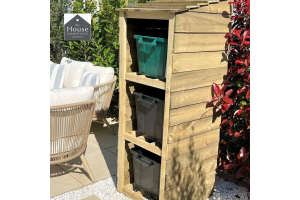
Since the early 2000s, Granite has been one of the most sought-after materials for floors, counters, and backsplashes in the bathrooms and kitchens due to its beauty and durability. Apart from that, this natural stone is also known for its antibacterial properties and its unique character (such as its hardness, colorful flecks, and resistance to heat, scratches, water, and most chemicals found in the kitchen).
Unfortunately, cleaning granite surfaces and ensuring that they always retain their natural beauty can be a challenge. However, don’t give up – that does not mean you can’t install them in your home; you only have to know how to clean and care for them. In this post, I am going to show you how to clean granite and keep it that way.
What should you use to clean granite?
Cleaning granite is one of the most important ways to care and maintain your granite floors, counters or backsplashes and ensure that they retain their natural beauty. But when it comes to cleaning granite surfaces, not all cleanser and cleaning products can be used as some can end up damaging its surface even though it is considered one of the hardest natural stones used in interior applications.
One of the most important things to take note of when cleaning granite or any other natural stone is to avoid using an abrasive pad even if you think the mess or stain needs it. Instead, use a soft cloth or a microfiber cloth to dust off or wipe down the surface.
Also, using a product or cleanser with high alkalinity or acidity on granite can damage the stone surface, and lead to a dull finish or etching. So, it is important to avoid washing your granite with harsh chemicals and use soap and water or a cleanser with natural PH instead. If necessary, soak dry or sticky stains with water or a cleanser with neutral PH first, then clean the surface with a microfiber cloth.
You can buy cleansers that are specifically made for granite and other natural stones such as Method Daily Granite and Granite Gold, but you don’t have to use them all the time. Simply carry out general cleaning or clean up spills using mild dishwashing soap and a wet soft cloth. Just keep in mind that cleansers and liquid soap can leave residues that may become visible and noticeable as time goes by, especially on darker granite stones.
Can you clean granite using natural products like vinegar and lemon?
Although natural products like vinegar and lemon are mild natural cleansers and are a go to solutions for DIT cleaning, they are too acidic to use on granite and should be kept on the shelf when you’re cleaning a natural stone. Instead, you should use a product designed for granite or reach for a dishwashing soap. However, you should check the labels on your cleaning product and avoid any product that contains the following:
• Citric acid
• Bleach
• Ammonia
• Lemon
• Vinegar
You should also avoid the following household cleaners:
• Soft Scrub
• Formula 409
• Lysol wipes or Lysol
• Windex
Any of the product of chemicals listed above will gradually erode your granite finish, remove its luster, wear away the stone, change its color, and make the stone more susceptible to stains.
How to Clean Granite and Keep It That Way
Cleaning granite and maintaining its natural beauty is simple. However, there are a few materials you’ll need - this include:
• Dish washing soap or other granite cleaning product
• Microfiber cloths
• Warm water
• Hydrogen peroxide
• Baking soda
• Rubbing alcohol
• Sealant
Cleaning your granite – step by step guide
Step one – general cleaning
Fill a small bucket or container with warm water and add a little quantity of mild dishwashing soap or other granite cleaning product. Stir it gently to mix properly. Before you move forward to cleaning the whole surface of the stone, test your cleaning solution on the hidden or less visible portion of the granite to see how it will react to it. This will help to avoid ruining the whole granite with a solution they react negatively to.
Dip a clean soft cloth in the cleaning solution and wring it out. Use the cloth to wipe down the surface of the granite to pick crumbs and dirt off its surface and follow up with a thorough rinse.
Step two – disinfect your granite
Mix one part rubbing alcohol and one-part water into a spray bottle, fasten the bottle and shake it gently to mix the solution together. Spray the surface of granite with this disinfecting solution and let it sit on it for 5 minutes. Dip the clean soft cloth back in the cleaning solution, wring it out and wipe the granite surface again to clean of the disinfecting spray. If you like you may wipe it again with water.
Wipe the surface of the granite with a dry microfiber cloth or towel, this will help dry the granite and avoid the occurrence of water stains or pesky water spots on its surface.
How to clean stubborn stains
If you have a stubborn stain on your granite, don’t despair. Try the following options.
• If you’re removing a water-based stain, create a hydrogen peroxide solution by mixing one part of water with three parts of hydrogen peroxide together and rub the solution on the affected area using a clean cloth.
• If you’re removing an oil-based stain, create a baking soda paste by mixing one part of water with three parts of baking soda together. Rub the mixture on the affected area using a clean cloth.
• If the stain is really tough, leave the mixture on the affected area overnight. In the following day, rinse it thoroughly and dry.
Step three – seal the surface
Sealing your granite surface helps keep bacteria and stains on the stone’s surface where they can be easily cleaned instead of letting them settle into the stone’s microscopic pores. This prevent future stains and chips while giving you time to identify a spill and clean it up.
Sealing should be done immediately after installation to protect the stone. After that, it should be done once or twice in a year especially when you discover that water is no longer beading up on its surface.
When you seal your granite countertop, ensure that it is properly cleaned and completely dry before you proceed. Apply the sealant evenly and make sure it covers the whole surface of the stone. Let it sit on the granite surface for about 10-15 minutes and wipe up the excess sealant with a clean microfiber cloth. You can apply another coat of sealant the following day. This is really not necessary, but it help ensure that you cover the entire area evenly while increasing the longevity of the sealant.
Conclusion
Granite surfaces are a beautiful addition to any home - an investment that homeowners will want to keep and retain its natural beauty for years. However, it is important to maintain and manage them properly to keep them looking good for many years to come. Remember, cleaning, disinfecting, drying and sealing your granite surface is not enough, you need to manage it properly by protecting it against grit, dirt and abrasive sand, avoid harsh cleaning compounds, and always stay on top of stains and spills.
Visit these links to find more information on granite house signs, granite house numbers and granite pet memorials.





